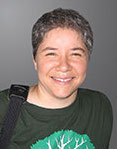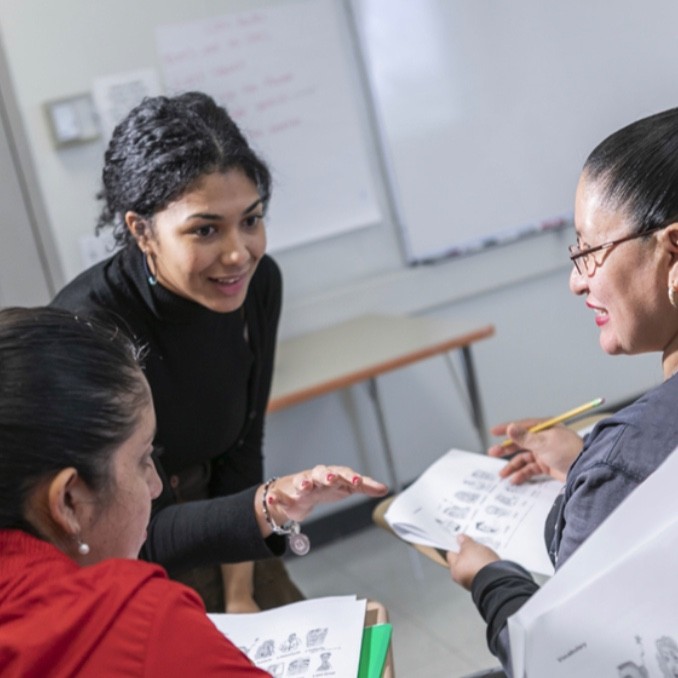You Do, You Do, You Do
by Sarah Lonberg-Lew

When I was learning to be a teacher, I was taught the “I do, we do, you do” approach as a way of easing students into material and gradually releasing responsibility to the students. This was reinforced for me in different teaching jobs where professional development trainers extolled it as the best frame for teaching and learning. I’ve got to say, though, that when I used it myself, I found it serviceable, but not thrilling (for me or for my students). The “I do” part, where students watch the teacher demonstrate the skill, can be boring, or worse, incomprehensible to students. It might even set them up to tune out at the very beginning of a lesson. They may never make it to “you do.”
I used “I do, we do, you do” for years and even taught it to other teachers, but I wonder now what kind of message it sent to my students. It seems to imply an assumption that they will not be able to handle the work unless I show them how to do it first; that they need me to break it down because they can’t figure it out on their own. Further, it suggests that students need me to assure them they are on the right track or correct their missteps as they work.
I came to believe that if I wanted my students to become independent and lifelong learners, I needed to find a better way. I needed to stop teaching them that the only way to learn something new is to have someone show them how to do it. Ironically, we know explicit instruction isn’t the the only way to learn. Think of the people who discovered and created the math and sciences that we teach and learn today. They didn’t have someone to demonstrate how to do it, then practice alongside them, and then supervise their independent work. At some point, these people noticed patterns, asked questions, and made and investigated conjectures. Isn’t that we want for our students? Isn’t that what a strong workforce needs, too?
People are still discovering and creating math. Iranian mathematician Maryam Mirzakhani was the first woman ever to win the Fields Medal, the most prestigious prize in mathematics. Other mathematicians described her work as creative and said that she made connections between ideas that nobody had connected before. Her colleague at Stanford, Steven Kerckhoff, said, “What’s so special about Maryam, the thing that really separates her, is the originality in how she puts together these disparate pieces.” (https://news.stanford.edu/2014/08/12/stanfords-maryam-mirzakhani-wins-fields-medal/)
Our students can also be discoverers and creators of math like Maryam Mirzakhani. They can discover connections between ideas and even come up with ideas of their own. Anybody can. As teachers, we can set our students up as creators of math by giving them problem-based learning experiences. We can give them tasks that let them engage with challenging material without being told what to do first. We can ask them questions that show we expect them to think and not just listen. We can show them that we believe they are up to the challenge.
Instead of putting our planning time into creating examples to demonstrate, we can put it into creating challenges for students to jump into from the very beginning of class – challenges that will allow students to discover their own ways to add fractions, reason with ratios, find areas or volumes, or figure out the value of an unknown in an equation. (Check out the Math and Numeracy Teaching Resources page at the Adult Numeracy Network for a great collection of resources and ideas about this kind of teaching.)
Our model can become, “You do, you do, you do.”

Sarah Lonberg-Lew has been teaching and tutoring math in one form or another since college. She has worked with students ranging in age from 7 to 70, but currently focuses on adult basic education and high school equivalency.
Sarah’s work with the SABES Mathematics and Adult Numeracy Curriculum & Instruction PD Center at TERC includes developing and facilitating trainings and assisting programs with curriculum development. She is the treasurer for the Adult Numeracy Network.

Mercedez is a bilingual adult education teacher who has taught a wide range of different age groups and students from different nationalities in the Dominican Republic, the US, and Spain. Most recently, she has focused on the adult education of immigrants in NYC. She co-created a community for adult ed teachers that offer their classes in Spanish. This community includes a list of over 100 educators across the US (including Puerto Rico). Along with other colleagues, she has also led and organized workshops called “Compartir entre Colegas” for those teachers who feel excluded from developing their knowledge in their native language.
